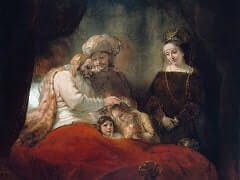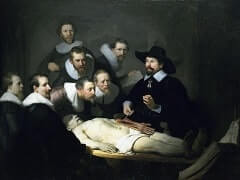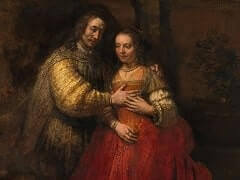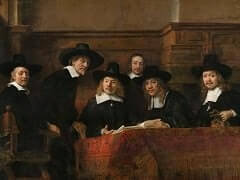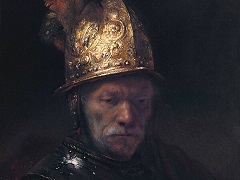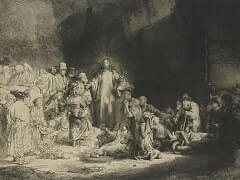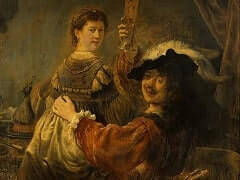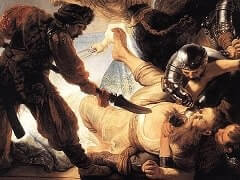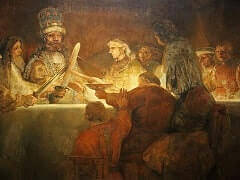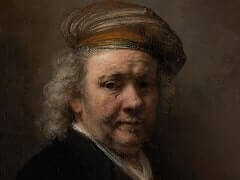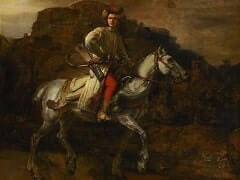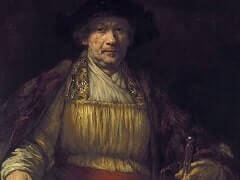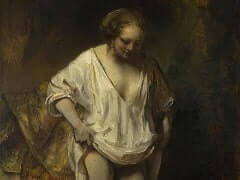The Descent from the Cross by Rembrandt
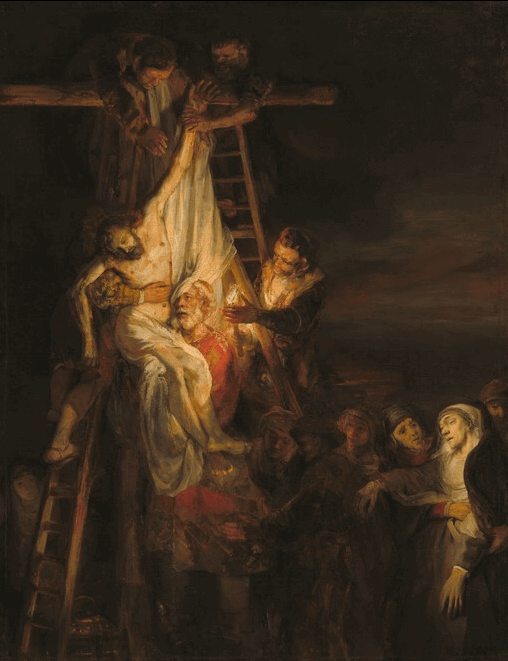
According to Rembrandt himself, his The Descent from the Cross observed "the greatest and the most natural movement". This formula fully expresses the current Baroque tendency, which
found its most powerful representative in Peter Paul Rubens. In fact, in The Descent from the Cross, Rembrandt is obviously dependent upon
Rubens' treatment of the same subject in Antwerp. In Rembrandt's Descent the body of Christ and the position of the three men holding it are clearly taken over. However, Rembrandt makes significant
changes. He heightens the dramatic effect by slightly different means and his realism is more incisive since he feels free from any classical requirements of dignity, beauty, or heroism.
Furthermore, in Rubens' Descent from the Cross, two men leaning over the cross are reduced to a single figure, in the
interest of a more dramatic concentration. This figure is placed higher and holds a winding sheet which is more broadly displayed, thus increasing the area of dramatic lighting on and around the
corpse. Rembrandt's realism is particularly noticeable in Christ's body, a really dead mass, sagging in ugly distortion; this is no a nude exhibiting of beautiful contour in
The Entombment by Raphael. The care and devotion of the men who take down the corpse reflect an intense inner participation utterly different
from Raising of the Cross by Peter Paul Rubens, which maintains a certain classical dignity, even in scenes of violent emotion. The pale,
cool blues, yellows, and greys of the Descent still recall Rembrandt's Leyden period, and show a subordination of colour to chiaroscuro.




